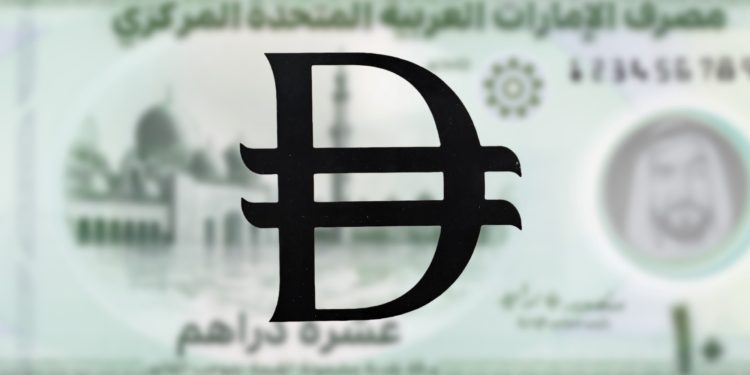Saudi Arabia and the UAE have introduced new currency symbols for the riyal and dirham, marking a strategic effort to gain global financial recognition. These symbols, launched within weeks of each other, aim to modernize and stabilize their currencies on the international stage.
Saudi Arabia led the initiative with King Salman approving a new riyal symbol, combining Arabic calligraphy with contemporary design to align with Vision 2030. Economist Mahmoud Khairy noted that these symbols could enhance the perception of the currencies, fostering national pride and distinguishing them globally.
Saudi Central Bank Governor Ayman Al-Sayari emphasized the symbol’s role in reinforcing the riyal’s identity. This initiative is part of Saudi Arabia’s broader digital transformation, including participation in Project mBridge, a multinational CBDC project.
The UAE followed with a new dirham symbol, featuring a design that integrates the letter “D” with elements of the national flag, highlighting financial strength and pride. The UAE Central Bank plans to incorporate the symbol into global fonts, aiming for recognition alongside major currencies like the dollar and euro.
This rebranding coincides with the UAE’s adoption of the FX Global Code, enhancing transparency in forex markets. The UAE is also advancing its digital dirham, a blockchain-based currency to revolutionize transactions, featuring smart contracts and cross-border payment capabilities.
The introduction of these symbols represents a strategic move towards financial independence. By establishing unique symbols, Saudi Arabia and the UAE are asserting their currencies as significant players in global finance.
Andreas Hassellof, CEO of Ombori, described the new symbols as tools of soft power and economic diplomacy, embedding cultural identity into global finance. Arun Leslie John, a market analyst, highlighted that the rebranding signals economic confidence and could attract foreign investment.
The UAE dirham is gaining prominence, ranking among the top traded currencies, while Saudi Arabia positions the riyal as a stable and innovative currency. Both nations are leveraging these changes to advance their digital finance agendas.
The UAE’s digital dirham will be a legal payment method, offering features like instant settlement and smart contracts, transforming financial transactions. Hassellof noted that digital currencies reduce transaction costs, benefiting smaller enterprises and remittances.
Leslie John pointed out that the UAE’s mBridge project will enhance intra-regional payments, with smart contracts improving trade finance flows. Tokenization will allow fractional asset ownership, expanding investment opportunities.
Khairy emphasized that digital currencies like the UAE’s and Saudi Arabia’s CBDC pilot could transform trade settlement and attract foreign investment by offering faster, cheaper cross-border payments.
Saudi Arabia is integrating the new riyal symbol into digital and physical transactions, planning gradual implementation across financial platforms. This move reflects a shared Gulf vision for blockchain-powered trade efficiency.
The simultaneous currency symbol introductions by Saudi Arabia and the UAE suggest potential for deeper monetary cooperation in the Gulf region. Leslie John suggested that these initiatives could lead to a future digital GCC currency union.


